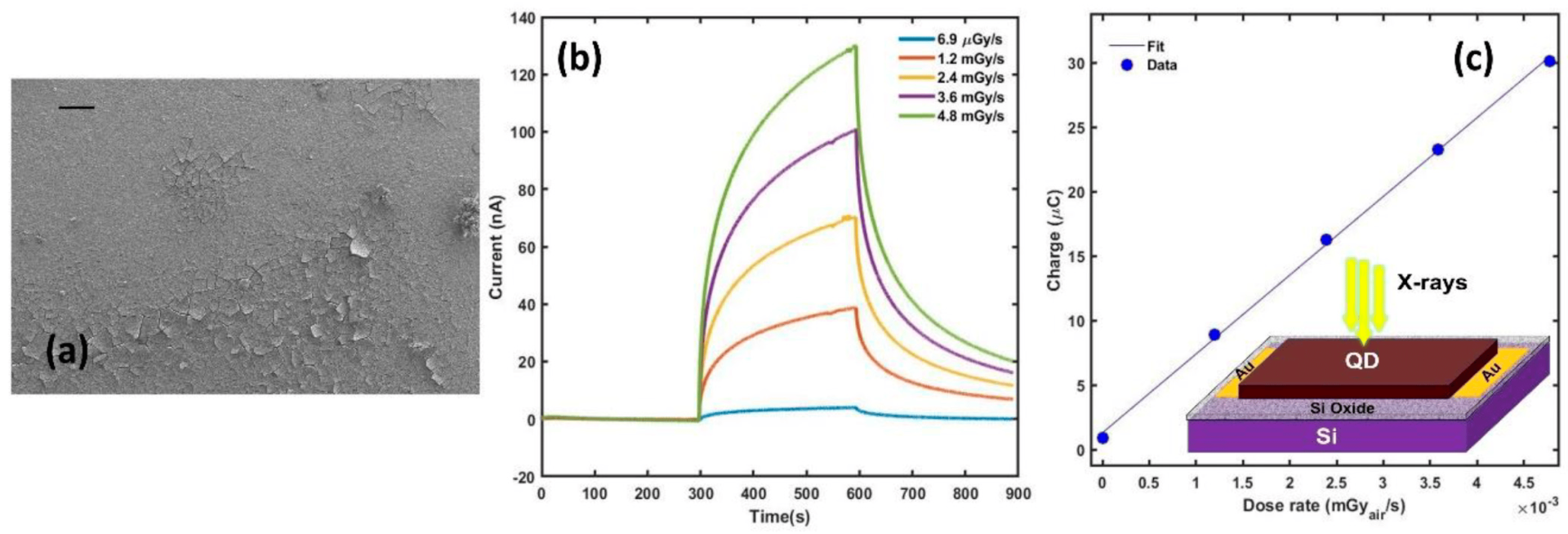Researchers from Roma Tre University and the National Institute for Nuclear Physics have developed a low-cost, high-sensitivity X-ray detector using PbS colloidal quantum dots (QD). The detector, fabricated using simple drop-casting techniques, has shown a maximum sensitivity value higher than commercial aSe and polyCZT detectors.
The development of such detectors is crucial for applications in nuclear and medical facilities, cultural heritage diagnostics, and homeland security. The team’s work represents a significant advancement in the field of X-ray detection, offering a promising alternative to traditional, more expensive materials.
What are Low-Cost, Low-Footprint X-ray Sensors Based on Colloidal Quantum Dots?
A team of researchers from the Department of Industrial Electronic and Mechanical Engineering and the Department of Sciences at Roma Tre University, along with the National Institute for Nuclear Physics, have developed a novel and inexpensive X-ray detector. This detector is based on PbS colloidal quantum dots (QD) and is fabricated using simple drop-casting techniques on a silicon substrate with pre-patterned gold interdigitated electrodes. The device has shown good linearity in the tested dose range and a maximum sensitivity value of 2370µC Gy1cm1, which is higher than typically reported values for commercial aSe and polyCZT detectors.
The development of such detectors is crucial for numerous applications such as dosimetry in nuclear and medical facilities, diagnostics in cultural heritage, and homeland security. Solution-processed materials are being investigated as novel x-ray sensing materials with constant improvements that are rapidly approaching commercial standards.
Why is Efficient Detection of X-ray Radiation Important?
Efficient detection of X-ray radiation by novel, inexpensive, and easily processable materials is of great importance in many fields of application. These range from homeland and airport security to personal dosimetry in radiology, also encompassing safety in nuclear plants. Current commercial room-temperature direct detectors often use expensive materials such as CdZnTe (CZT) or aSe. Both materials are bulky, rigid, and fragile. aSe shows poor performance, consequently requiring a high operating voltage. CZT is expensive and difficult to grow, though it is deemed the commercial gold standard for X-ray detectors.
Solution-processable materials such as perovskites, colloidal quantum dots, organic semiconductors, and metal-organic frameworks are promising candidates as alternative sensing materials. They are often considered to be inexpensive and easily tunable. Many detectors based on these materials have been demonstrated with exciting improvements in sensitivity, mobility, and limit of detection.
How are these X-ray Sensors Made?
The researchers used a simple protocol to fabricate the X-ray sensors. The PbS QDs were used as a sensing layer on a silicon substrate with gold interdigitated electrodes. The QDs colloidal solution was prepared following a modified Hines and Scholes procedure. UV-Vis analysis showed band-edge absorption at 920 nm, indicating a mean QD size of 3 nm.
The fabrication protocol of the devices was kept simple and straightforward, cyclically drop-casting the PbS QD solution onto the substrate and performing in situ ligand exchange with butylamine (BA). The final treatment for all the devices was oxidation in air at room temperature. The sensing layer was characterized by microscopy and spectrometric techniques.
What are the Results of the X-ray Sensor Tests?
Scanning electron microscopy (SEM) pictures showed that the QD film was homogeneous, albeit with a limited presence of surface cracking and flaking. Uniformity of the film was a key objective in the fabrication as it is known that it directly affects mobility and therefore charge collection in the detector.
The devices were tested under X-ray irradiation by illuminating the detectors for 300 s and measuring the photogenerated current. Within the considered dose range, the devices showed good charge-dose (CD) linearity. From the slope of the CD line, the researchers calculated the sensitivities of the detectors, obtaining 2374 103µC/Gyair1cm2. This excellent value is, to the best of their knowledge, higher than the best reported sensitivity for QDs X-ray direct detection.
What is the Future of X-ray Sensors?
The development of these low-cost, low-footprint X-ray sensors based on colloidal quantum dots represents a significant advancement in the field of X-ray detection. The simplicity of the fabrication process, combined with the high sensitivity of the detectors, makes them a promising alternative to traditional, more expensive materials.
As solution-processed materials continue to be investigated and improved, it is likely that we will see further advancements in this area. The potential applications of these detectors are vast, from medical and nuclear facilities to homeland security, making this an exciting area of research with significant real-world implications.
Publication details: “Low-Cost, Low-Footprint X-ray Sensors Based on Colloidal Quantum Dots”
Publication Date: 2024-03-22
Authors: Marco Ruggieri, Elisabetta Colantoni, Eleonora Marconi, Andrea Fabbri, et al.
Source:
DOI: https://doi.org/10.3390/proceedings2024097081

